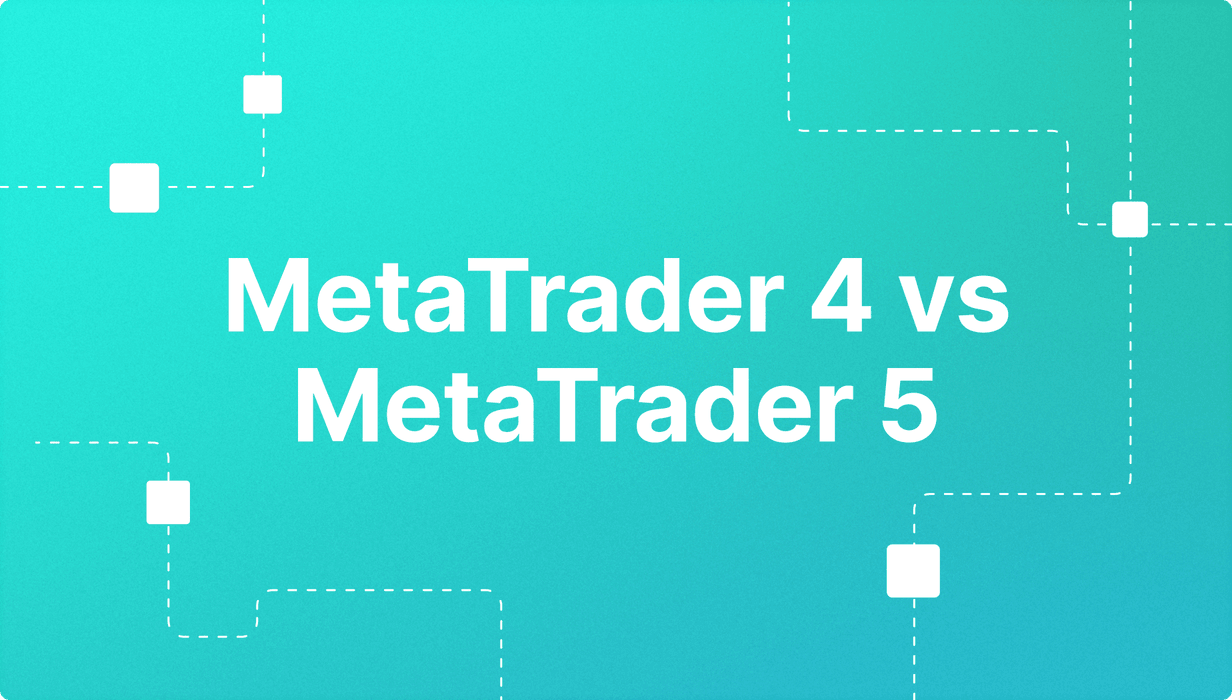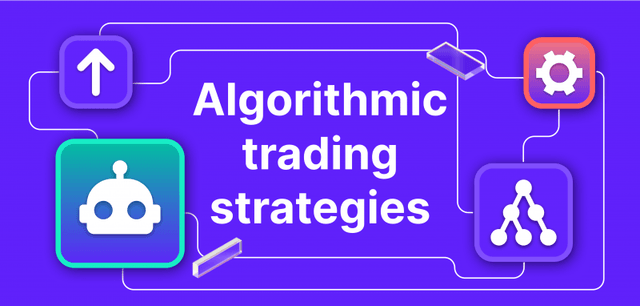MetaTrader 4 vs MetaTrader 5: Breaking Down Differences and Alternatives

For brokers, the decision between MT4 and MT5 has always involved trade-offs—familiarity vs flexibility, simplicity vs scalability. In 2025, it’s no longer a question of if you’ll need to transition, but when.
MetaTrader 4 is officially closed to new licensees. MetaQuotes has shut down MT4 distribution, which makes MT5 the only supported option for new brokerages. Existing MT4 brokers must now decide: migrate to MT5, rebuild around another platform, or continue supporting legacy infrastructure with no upstream updates.
This guide outlines how MT4 and MT5 differ at a structural level—from execution architecture to asset coverage—and how those differences affect your ability to scale, integrate, and stay compliant.
Have a Question About Your Brokerage Setup?
Our team is here to guide you — whether you're starting out or expanding.
MetaTrader 4: The Tried-and-True Veteran
MetaTrader 4, launched in 2005 by MetaQuotes, became the foundation of the retail FX industry. Its lightweight architecture made it easy to deploy and scale in the early years of online trading. For many brokers, MT4 was the platform that made digital FX accessible and profitable.

MetaTrader 5: The New-Age Powerhouse
MetaTrader 5, released in 2010, was built as MT4’s successor to expand beyond it. The platform supports exchange-based products, faster backtesting, better risk tools, and a more scalable server design.

Key Differences Between MetaTrader 4 and MetaTrader 5
This section outlines how MT4 and MT5 differ at a structural level and how these differences affect a broker's operations, product strategy, and client experience.
Trading Instruments
MT4 is limited to forex and CFDs. While flexible for currency markets, it doesn't natively support stocks, futures, or exchange-based instruments.
MT5 was built for multi-asset trading. It supports virtually unlimited symbols and includes equities, commodities, and futures, making it a better fit for brokers expanding beyond FX.
Order Types
MT4 includes standard market, stop, and pending orders. For most retail FX use cases, this is sufficient.
MT5 adds more control with Fill or Kill, Immediate or Cancel, and partial fill logic. These features are often required by institutions and algorithmic trading strategies.
Charting Tools
MT4 includes 31 charting objects.
MT5 expands to 44 tools, with better object handling and advanced drawing options. This supports more refined technical analysis for multi-asset strategies.
Timeframes
MT4 offers 9 timeframes.
MT5 increases this to 21, adding more granular views like M2, M3, and H3. Useful for scalpers, algo traders, and portfolios running multiple time horizons.
Technical Indicators
MT4 ships with 30 built-in technical indicators. It's enough for most retail-focused brokers and works well with off-the-shelf trading strategies.
MT5 includes 38 indicators and offers a more flexible framework for integrating custom tools, which is useful for brokers supporting semi-pro and algo-driven traders.
Economic Calendar
MT4 doesn’t include a built-in economic calendar. Traders rely on third-party sources or plugins.
MT5 integrates an economic calendar directly into the terminal. This simplifies macro-driven analysis and increases retention for fundamental traders.
Fund Transfers Between Accounts
MT4 doesn’t support internal fund transfers between trading accounts.
MT5 allows users to move funds between accounts on the same platform—an important feature for multi-account clients or prop desks.
Embedded MQL5 Community Chat
MT4 has no direct chat or user interaction features.
MT5 includes embedded access to the MQL5 Community, allowing traders to share strategies, scripts, and seek peer support without leaving the platform.
Symbols
MT4 supports up to 1,024 symbols. That’s workable for a Forex-only broker, but it becomes limiting when adding new markets.
MT5 removes symbol limits entirely. This supports deeper product coverage across FX, CFDs, equities, and listed derivatives.
Netting
MT4 supports hedging only — traders can open multiple positions in the same instrument, including opposite ones.
MT5 offers both hedging and netting. With netting, all trades in the same symbol merge into one position. If a client buys and sells the same volume, the net position equals zero.
Programming Languages
MT4 uses MQL4, a procedural language built for simple scripts and trading automation in FX.
MT5 runs on MQL5, a more advanced, object-oriented language similar to C++. It enables faster execution, cleaner architecture, and better scalability, especially when building multi-symbol EAs or algorithmic portfolios.
Backtesting
MT4 supports single-threaded backtests, one symbol at a time. That limits speed and realism when testing portfolio-based or multi-instrument strategies.
MT5 enables multi-threaded, multi-symbol backtesting using real tick data. This improves accuracy, speeds up optimisation, and supports more complex, cross-asset strategies.
Market Depth (DoM)
MT4 shows only basic Level II pricing with limited depth visibility.
MT5 includes a full Depth of Market module, exposing multiple layers of liquidity. This is critical for brokers serving professional traders or running B-Book exposure models.
Execution Models
MT4 supports Dealing Desk (B-Book) and STP (Straight Through Processing) models.
MT5 adds Exchange Execution, which allows brokers to route trades directly to centralised venues or liquidity pools. This gives better post-trade transparency and helps meet compliance requirements in regulated markets.
Looking for Institutional-Grade Liquidity?
Discover how B2BROKER connects your platform to deep, multi-asset liquidity with flexible margin accounts and real-time execution.
Demo Trading
Both MT4 and MT5 support demo trading. Clients can test strategies, get familiar with the interface, and explore features using real-time data and virtual funds.
For brokers, demo environments reduce onboarding friction, increase platform stickiness, and provide a safer entry point for less experienced users.
Hedging Capabilities
MT4 supports hedging by default. Traders can open multiple opposing positions on the same instrument—useful for strategies involving partial exits or layered entries.
MT5 supports both hedging and netting. Brokers can configure the logic according to asset class, jurisdiction, or execution venue, thereby adding flexibility for multi-regulated environments.
UX / UI
MT4 offers a lightweight, functional interface that’s familiar to most retail traders. It’s simple but limited in layout customisation and scaling for complex portfolios.
MT5 features a more modern and modular interface, better suited to traders managing multiple assets or accounts. It supports more charting windows, flexible workspace arrangement, and richer context menus.
Support for Multiple Platforms
Both MT4 and MT5 are available on desktop (Windows), mobile (iOS/Android), and web.
Cross-device synchronisation allows traders to monitor and manage positions across platforms, which is essential for today’s mobile-first clients.

MT4 vs MT5: Which Is Better for Forex Trading?
MT4 dominates in retail Forex for one reason: it’s efficient, reliable, and almost every broker supports it. The ecosystem of EAs, tools, and tutorials remains unmatched. For brokers focused only on FX, MT4 offers minimal infrastructure friction.
MT5, however, is better built for what comes next. It offers faster execution, better risk tools, and native support for stocks, indices, futures, and more. If you're scaling into multi-asset trading or serving advanced users, MT5 gives you more flexibility and long-term readiness.
Can I Use an MT4 Account in MT5?
No. MT4 and MT5 use different account systems and server architectures. Accounts are not interchangeable. Brokers must create separate accounts for each platform, and clients need to use the correct terminal for access.
Which is Better for Beginner Traders?
MT4 is easier to start with. It has a cleaner layout, fewer order types, and a simpler settings structure. For traders learning how to place orders, read charts, or apply basic strategies, MT4 reduces friction. The interface is less dense, which makes the platform feel more accessible, even without prior trading experience.
MT5 introduces more tools—with more complexity. New users often struggle with the additional position settings, multiple order types, and platform configuration options. It’s better suited for traders who already understand margin logic, order routing, or portfolio-level trading. For total beginners, the extra functionality in MT5 can be more confusing than helpful.
Is MetaTrader 5 Better Than 4 for Multi-Asset Strategies?
That’s what MT5 was designed for. MT5 supports native connections to centralised exchanges, asset classes beyond FX (like stocks, indices, and futures), and unified margining across products. You can manage everything in one environment without relying on external bridges.
Brokers offering more than currency pairs need scalable infrastructure. Real-time risk management, multi-symbol execution, and compliance with exchange-based requirements are operational necessities at this point. MT5 handles this natively. For any brokerage building a multi-asset product, MT5 is the only viable option inside the MetaQuotes ecosystem.
Pros and Cons of MetaTrader 4 vs MetaTrader 5
Choosing between MT4 and MT5 comes down to your infrastructure, product roadmap, and how you plan to scale. Here’s how each platform performs under operational pressure.
MT4 Advantages
- Familiar to Traders and Staff: MT4 has been around since 2005. Most support teams, developers, and retail traders already know how it works. That reduces onboarding time and operational risk.
- Large Ecosystem: With thousands of custom indicators, EAs, and third-party tools available, MT4 still has the deepest community of FX-focused extensions.
- Low Infrastructure Overhead: MT4 runs on modest hardware and requires minimal server resources. This makes it easier to maintain for lean teams or startups.
MT4 Limitations
- FX-Only by Design: MT4 doesn’t support stocks, futures, or other exchange-traded instruments. Any attempt to add multi-asset support relies on external workarounds.
- Legacy Tech Stack: It’s 32-bit, single-threaded, and not optimised for modern backtesting or data-heavy strategies.
- No Future Development: MetaQuotes has stopped issuing new licenses and no longer maintains the platform. Long-term use comes with increasing compliance and security risk.
MT5 Advantages
- Built for Multi-Asset Brokers: MT5 natively supports FX, stocks, indices, and futures. No bridging needed. Ideal for brokers scaling into multiple asset classes.
- Faster, More Scalable Architecture: MT5 is 64-bit and multi-threaded. This enables faster execution, improved backtesting, and stable operation under load.
- More Native Functionality: MT5 includes advanced order types, a built-in economic calendar, full Depth of Market (DOM), and flexible position management out of the box.
- Actively Maintained: MetaQuotes continues to release updates, improvements, and documentation for MT5. It’s the only MetaTrader product currently supported.
MT5 Limitations
- Higher Learning Curve: MT5’s interface and position logic are more complex. It requires training for both traders and support teams.
- Smaller Ecosystem (for now): While growing, the MQL5 marketplace doesn’t yet match the size and diversity of MT4’s library.
- Heavier Infrastructure Requirements: MT5 requires more powerful servers, higher maintenance budgets, and a more technically skilled internal team.
How Do Hedging and Netting Differ?
MetaTrader 4 uses hedging by default. Traders can open multiple positions on the same instrument in both directions. For example, going long and short on EUR/USD at the same time. This approach gives flexibility in trade management for retail strategies that use partial exits or manage risk through layered entries.
MetaTrader 5 supports both hedging and netting. Netting merges all positions in one instrument into a single line. If a trader buys and then sells the same volume, the platform reduces the net position to zero. Most exchanges and institutional setups employ this logic to maintain clean position tracking and transparent margin management.
For brokers, this choice affects how you calculate margin, handle reporting, and meet regulatory rules. MT5 gives you the flexibility to switch between modes depending on asset class, client type, or licensing requirements.
Challenges with MT4/MT5 for New Brokers
For a new brokerage launching in 2025, the MetaTrader ecosystem presents several significant challenges:
- MT4 is off the table. MetaQuotes no longer offers white label licenses, which means new brokers can’t deploy it—period.
- MT5 comes at a cost. While technically superior, it requires a full server infrastructure, more resources, and a larger upfront investment.
- Customisation is limited. Both platforms come with rigid front-end structures and lack native support for modern APIs, making it harder to create differentiated products or integrate external systems.
- Compliance adds friction. Running MetaTrader means managing reporting, surveillance, and technical infrastructure in-house—something not every new team is ready for.
Why Consider Alternatives to MT4/MT5?
For brokers launching in 2025—or looking to modernise—MT4 and MT5 come with clear constraints.
MT4 is no longer available. MT5 is powerful, but it adds infrastructure complexity, has fewer third-party tools, and takes more time to deploy. These tradeoffs push many teams to explore alternatives that offer faster integration and more flexibility.
Modern platforms solve different problems. They provide better control over the interface, support API-driven integrations across CRM, analytics, and payments, and include built-in tools for multi-asset execution and compliance. These aren’t replacements for MetaTrader. They’re options built for brokers who prioritise faster launches, easier onboarding, and product control.
cTrader

cTrader is a modern trading platform known for its clean interface, fast execution, and transparent pricing. It's widely used by brokers who want to offer a more intuitive user experience, especially for discretionary traders.
With B2BROKER’s cTrader White Label, brokers can launch under their own brand and connect to institutional-grade liquidity. The platform includes Level II pricing, advanced charting, algorithmic trading support, and open APIs for backend integration. Its interface is easier to navigate than MetaTrader, and its structure gives brokers more room to tailor the client experience.
B2TRADER
B2TRADER is a multi-asset trading core built for brokers and exchanges that need full control over execution, asset coverage, and back-office logic.
It supports aggregated liquidity, multi-market order books, and advanced risk management. Brokers can manage accounts, reporting, and compliance from a single interface. Unlike MT4/MT5, B2TRADER is a core system that powers execution, admin, and infrastructure in one stack. And it’s deployable in weeks, not months.
Power your Brokerage with Next-Gen Multi-Asset & Multi-Market Trading
Advanced Engine Processing 3,000 Requests Per Second
Supports FX, Crypto Spot, CFDs, Perpetual Futures, and More in One Platform
Scalable Architecture Built for High-Volume Trading

Selecting the Right Platform
Platform choice shapes your product, your client base, and how fast you can adapt to the market. The right infrastructure depends on what you’re solving for: speed, flexibility, multi-asset expansion, or regulatory alignment.
Future-Proofing Your Brokerage
MT4 may still work—but it’s no longer licensed for new brokers. Maintaining legacy infrastructure also creates limits: fewer updates, shrinking vendor support, and integration challenges. For firms planning to scale or modernise, migration to MT5 or a modular alternative is only a matter of time.
Considering Regulatory Changes
From MiFID II enhancements in Europe to tightening oversight by the U.S. SEC and CFTC, and evolving licensing standards in Asia, regulatory scrutiny over forex brokers is rising. Brokers now face stricter requirements for transparency, client fund protection, and auditability. MT5’s architecture—multi-asset, exchange-compatible, and audit-ready—is better equipped to meet these demands than MT4’s legacy stack.
Empower Your Brokerage with the Best Trading Technology from B2BROKER
Platform decisions have a long-term impact. They define how your product scales, how you serve clients, and how quickly you can adapt to regulatory and market shifts.
Whether you’re maintaining MT4, launching MT5, or planning a new rollout with cTrader or B2Trader, your infrastructure must align with what your business needs to deliver—now and over the next 5 years.
B2BROKER helps brokers move from planning to execution with precision. We support MT4, MT5, cTrader, and B2TRADER environments through a unified ecosystem of liquidity, white-label technology, regulatory setup, and operational support. If you're launching a new brand or want to boost an existing one, we provide the tools and technical depth to keep your brokerage stable, compliant, and competitive.
Discover the Tools That Power 500+ Brokerages
Explore our complete ecosystem — from liquidity to CRM to trading infrastructure.
Recommended articles
Our team will present the solution, demonstrate demo-cases, and provide a commercial offer







